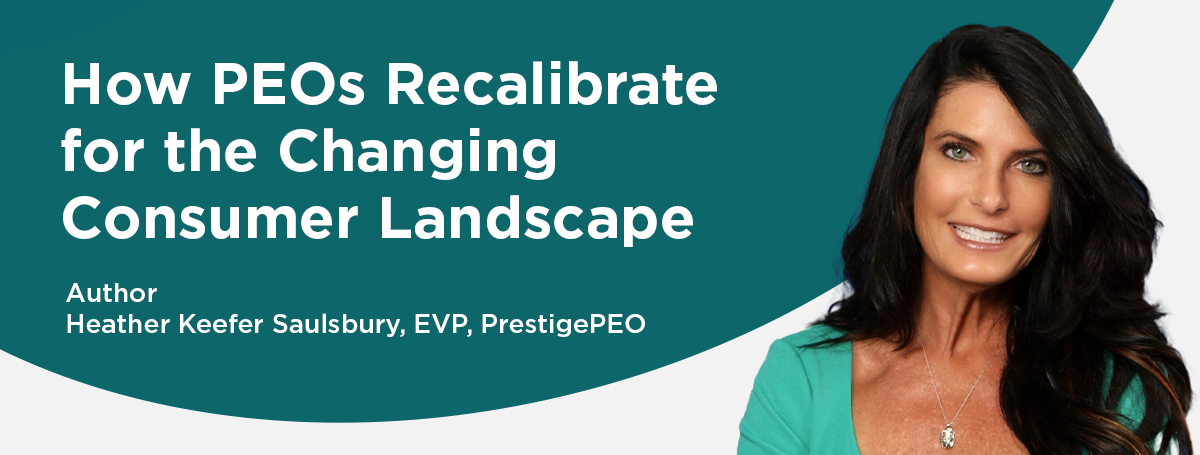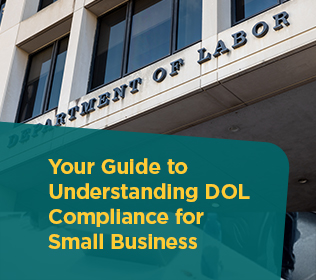
The professional employer organization (PEO) industry began decades ago, and the need for it continues to grow. It isn’t hard to see why – businesses that partner with a PEO are 50% less likely to go out of business than those that don’t, and they grow 7% to 9% faster.
Although there are over 500 PEOs in the U.S. assisting more than 200,000 small businesses, the landscape has changed. Changes in human resources, labor laws, job-searching processes, technology and talent demand have all impacted how PEOs provide solutions and help employer clients.
However, businesses turn to PEOs for largely the same reasons they always have – to access more value and harness better solutions.
To be successful, consider learning how the demands for PEOs have both changed and stayed the same.
Businesses that partner with a PEO are 50% less likely to go out of business than those that don’t, and they grow 7% to 9% faster.
BIG CHANGES IN THE PEO INDUSTRY
Every industry goes through ups and downs along with the general consumer market and economy. Human resources professionals must understand these shifts and how employees are responding, while also navigating budgetary priorities and ways employers can save.
Here are a few major PEO changes and trends to pay attention to.
Pandemic Residue
Employers are still making moves in how their employees work and dealing with pandemic aftermath. Starting in 2020, there was a mass shift in how and where people worked, and a large portion of the global workforce is either hybrid or remote. Organizations and employees alike have found that remote working can save on costs, improve efficiency and increase employee satisfaction. But the change also impacts multistate regulations and taxes and brings the potential to hire a global workforce.
Increasing Employee Demands
Because of these shifts to hybrid or remote work, employees want their employer to offer more flexibility options. Many people reevaluated their personal and career goals during the pandemic, and that means they’re largely in search of more fulfilling work. Employees want to work for an employer that is environmentally conscious, involved in the community and supportive to workers. Benefits packages must be competitive to provide the support employees now demand.
Technology Integrations
Human resources teams have more options for tech than ever. Automation, AI, machine learning and data analytics have all been changing the way people work and increasing the amount of information available to them. PEOs are well-positioned to provide expertise on the best platforms to integrate, and to emphasize the benefits of a digital approach to operations.
HOW PEOS PREPARE FOR THE FUTURE
One key area you may not associate with human resources is marketing. But the two are closely connected.
PEOs today need to carefully define their niche. They need to know their ideal client and what their needs and pain points are. Ask yourself what you do best as a PEO. How are you different from competitors? What essential thing do you do that no one else does?
Once you identify your niche and your value proposition, you can begin to target growth in those areas. This takes recalibrating your marketing – you may need to alter your strategy to better reach and serve your niche.
For example, not all businesses are fully remote. Some still require employees to work in person, whether for logistical reasons or to align with company values. If this type of business is your niche, consider how you can emphasize support for in-office, traditional teams.
Another key area is identifying the source of referral business. Are you getting clients from benefit agencies? PEO brokers? Financial professionals? Direct from the business owner?
When recalibrating, think of ways to target solutions that speak to these referral sources, too.
HOW PEOS AND CONSUMER DEMAND HAVEN’T CHANGED
What we know for certain is that employers have always turned to PEOs to access better employee benefits and streamline administration. The benefits of doing so are many:
- Accessing and affording benefits that are usually reserved for large companies
- Outsourcing non-revenue-generating human capital support
- Freeing up time for business owners to focus on core strategy and operations
- Gaining security and peace of mind that compliance and insurance concerns are taken care of
- Accessing the latest technologies and software applications
- Receiving comprehensive human resources support
In general, these advantages haven’t changed, even while demand for benefits, working arrangements or available tools have.
WORKING WITH A PEO
One of the most convincing reasons to work with a PEO is that everything is always changing in employment and human resources. That will never cease to be true. Lately, with shifts to remote work, new technologies and greater consumer demand on employers, it’s never been a better time for employers to find the right PEO partnership.




